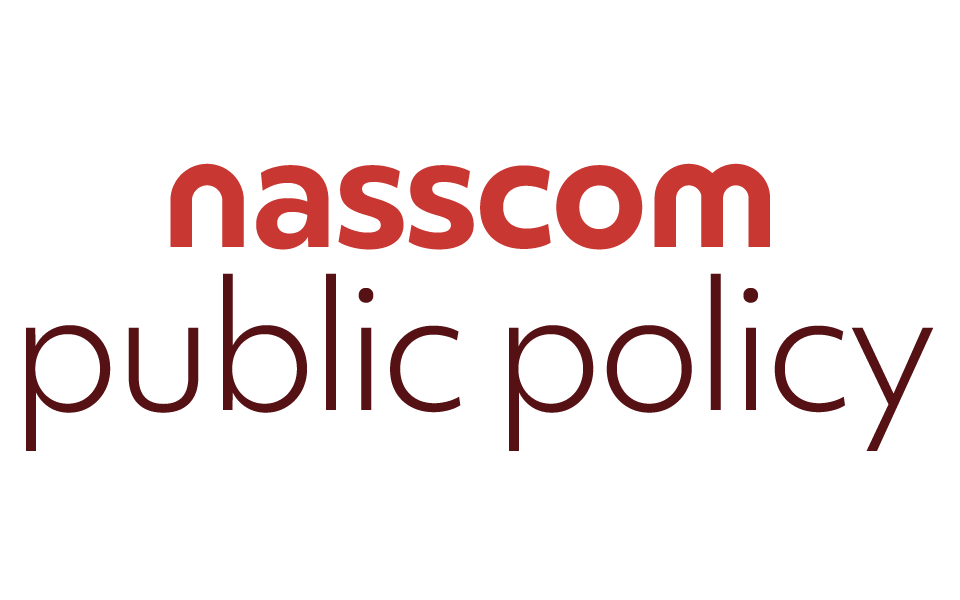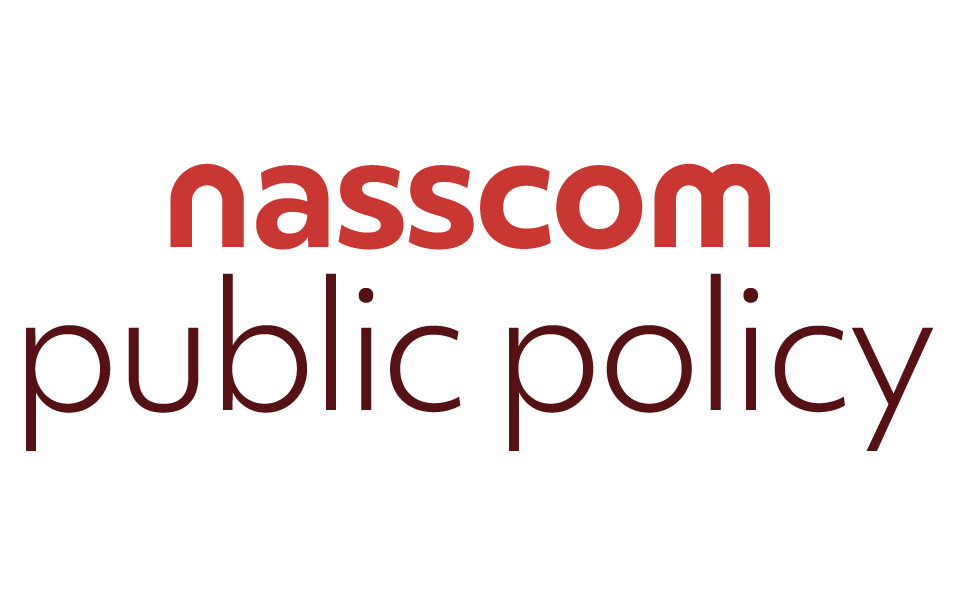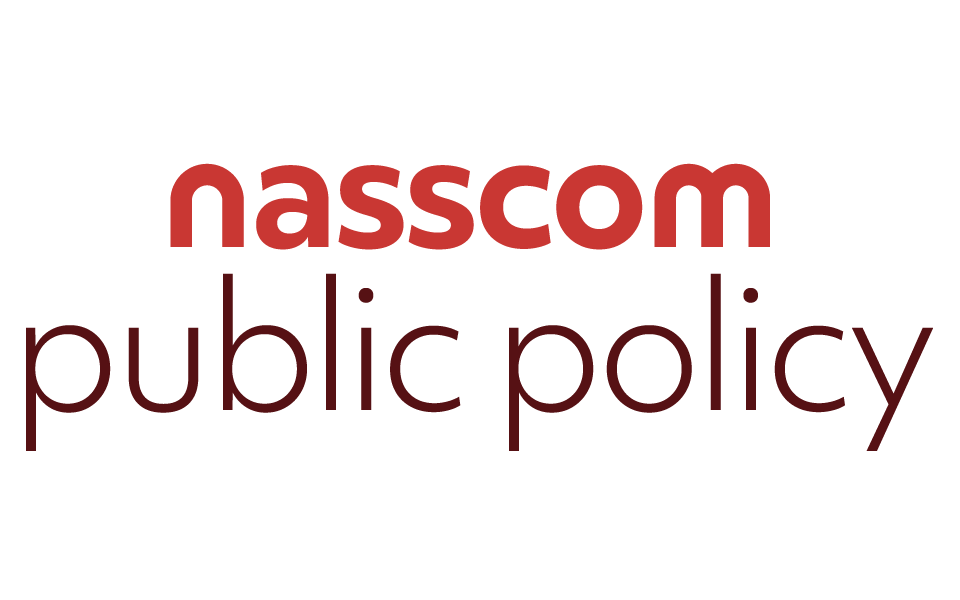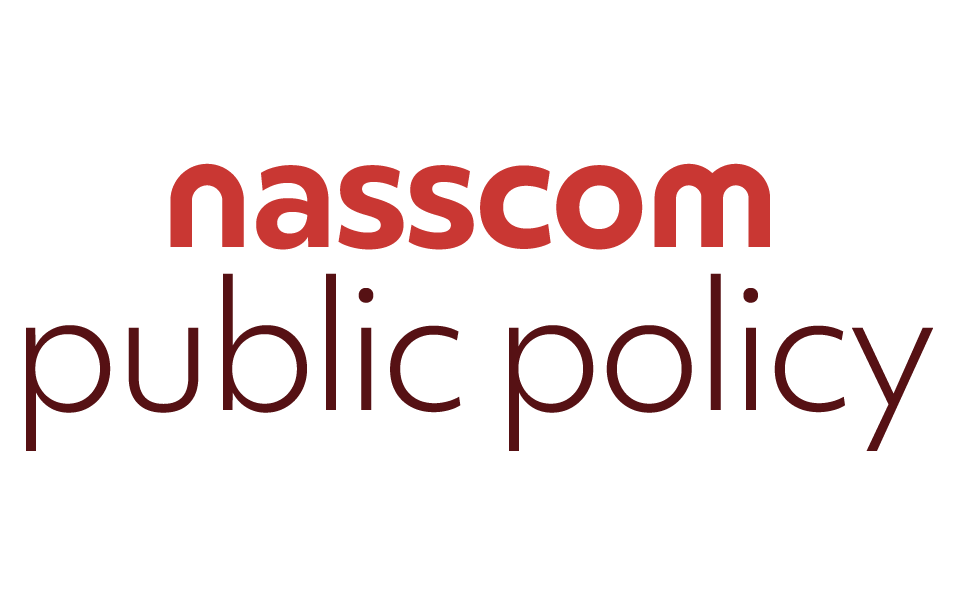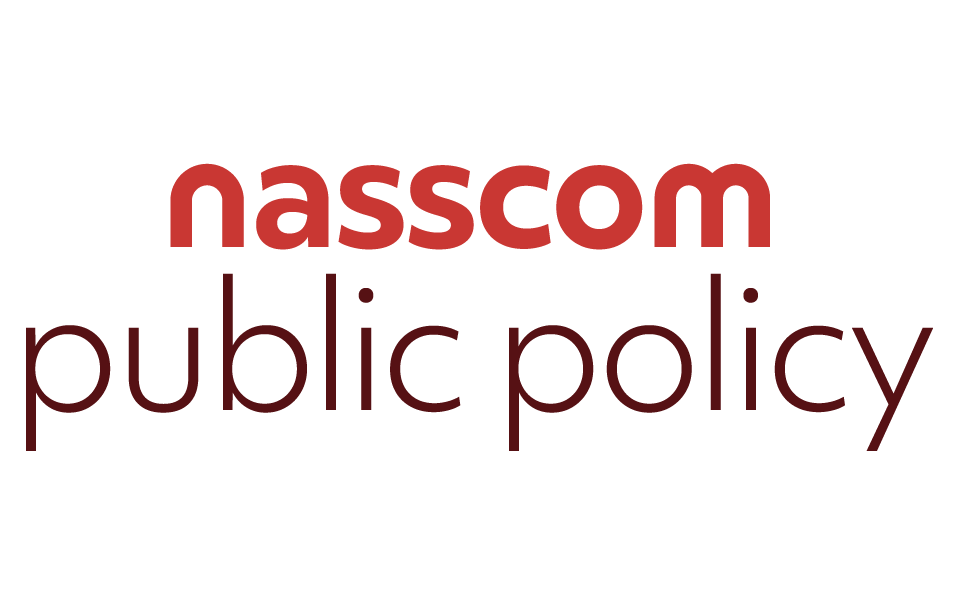The Economic Survey 2023-24 was tabled in Parliament today by the finance minister Nirmala Sitharaman. The Survey presents a review of the developments in the economy over the last year. We, at nasscom, focus on enabling growth, innovation, securing ease of doing business reforms, tax certainty, and a high-growth environment for tech industry and start-ups in India. Some of these objectives are aligned with economic survey. It is heartening to see that the Economic Survey has recognised that for effective policy making, forging and sustaining consensus between governments, businesses and the social sectors are necessary. Further, there needs to be conversation, cooperation, collaboration, and coordination across ministries, states, and between the union and states.
Some of the key highlights from the survey are listed below:
Indian economy
- The Indian economy is estimated to have grown 8.2% in real terms in FY24. This growth came on the heels of growth rates of 9.7% and 7.0%, respectively, in the previous two financial years.
- The survey conservatively projects a real GDP growth of 6.5–7% in FY25, with risks evenly balanced, cognizant of the fact that the market expectations are on the higher side.
- The inflation rate is largely under control, except certain food items. The trade deficit was lower in FY24 than in FY23, and the current account deficit for the year is around 0.7% of GDP.
- The external investment, measured in terms of dollar inflows of new capital, was USD45.8 billion in FY24 compared to USD47.6 billion in FY23.
- India’s services exports grew by 4.9% to USD 341.1 billion in FY24, with growth largely driven by IT/ software services and ‘other’ business services.
Sustaining overseas investor interests
India’s Balance of Payments shows that investment interest of external investors was USD45.8 billion in FY24 compared to USD47.6 billion in FY23. This slight decline is in line with global trends. Reinvestment of earnings remained the same. The survey also highlighted that the environment for foreign direct investment is not highly favourable for many reasons:
- Higher interest rates in developed countries means a higher cost of funding as well as higher opportunity cost to invest abroad.
- Emerging economies have to compete with active industrial policies in developed economies involving considerable subsidies that encourage domestic investment.
- Uncertainties and interpretations related to transfer pricing, taxes, import duties and non-tax policies remain to be addressed.
- Geopolitical uncertainties, which are on the rise, will likely exert a bigger influence on capital flows.
Information Technology (IT) services
- The IT and IT enabled services have been instrumental in maintaining the country's external balance through export earnings, which are set to increase further.
- The growth in Global Capability Centres (GCCs) is reflected in the services balance of payments, with ‘Other Business Services’ being the second-largest contributor in services exports in FY24 (26%), after IT services (48%).
- India remains a GCC favourite in a highly competitive global environment due to its ample talent endowment and cost advantage. GCCs account for more than 1% of India’s GDP and the share is expected to grow further.
- Growth of GCCS: The flourishing growth of IT services has supported expansion of GCCs and tech start-up ecosystem in India. GCCs have grown significantly, from over 1,000 centres in FY15 to more than 1,580 centres, with over 2,740 units by FY23. Revenue from India's GCCs has increased from USD 19.4 billion in FY15 to USD 46 billion in FY23, growing at a compound annual growth rate (CAGR) of 11.4%.
- As per a CBRE research report, during H1 of 2023, about 22% of GCC centres were set up in tier-II cities, driven by the availability of existing and fresh talent.
- Employment growth in GCCS: In FY23, the total talent employed in Indian GCCs exceeded 1.66 million. Of this workforce, over 42% are engaged in ER&D, 34.5% in BPM, and 23.4% in IT services. The BFSI sectors collectively account for about 58% of India's IT GCC talent.
- ER&D: The key drivers for the growth of ER&D in India include strategic long-term partnerships, extensive digitalisation, and the adoption of cloud technologies.
Innovation and startups
- India has consistently improved its rank in the Global Innovation Index from 81st position in 2015 to 40th in 2023, as per GII (2023).
- According to World Intellectual Property Organisation (WIPO), India saw the highest growth (31.6%) in patent filings in 2022 among the top 20 countries of origin.
- The Patent Office granted nearly one lakh patents in FY24. The number of granted patents increased seventeen-fold from 5,978 in 2014-15 to 1,03,057 in 2023-24.
- Start-ups filed more than 12,000 patent applications from 2016 to March 2024.
- The average time taken for examination of a patent application has reduced from 72 months in 2015 to 5-23 months in 2022.
- Sustained efforts by Government spanning “simplification and handholding”, “funding support and incentives” and “industry academia partnership and incubation” have led to increase in Department for Promotion of Industry and Internal Trade (DPIIT) recognised startups from over 300 in 2016 to 1,17,254, as on 31 December 2023. These recognised startups have created over 12.42 lakh direct jobs creating significant economic impact.
- Changes in consumption patterns and increased internet penetration paved the way for retail tech startups. The BFSI sector saw a surge in start-ups starting in 2016, driven by significant events such as the introduction of UPI. The demand for scalable and efficient cloud solutions led to growth of Software as a Service (SaaS) start-ups, resulting in 21 unicorns since 2014.
- The number of technology start-ups in India rose remarkably from around 2,000 in 2014 to approximately 31,000 in 2023. The sector witnessed the inception of roughly 1000 new tech start-ups in 2023.
- There are over 13,000 DPIIT-recognised start-ups in artificial intelligence, the Internet of things, robotics, and nanotechnology by the end of FY24.
- The draft National Deep Tech Start-up Policy is a comprehensive framework to tackle deep tech start-ups' challenges.
Taxation
- The growth in gross tax revenue (GTR) is estimated to be 13.4% in FY24, translating into tax revenue buoyancy of 1.4. The growth was led by 15.8% growth in direct taxes and a 10.6% increase in indirect taxes over FY23.
- The increased contribution of direct taxes to GTR over the years has been in line with the government’s effort to enhance progressivity in taxation.
- The increase in indirect taxes in FY24 was mainly driven by a 12.7% growth in GST collection.
- The gross GST collection reached ₹20.18 lakh crore2 in FY24, marking 11.7% increase from the previous year, underscoring robust domestic trading activity
Labour
- Indian labour market indicators have improved in the last six years, with the unemployment rate declining to 3.2% in 2022-23.
- Hiring in the IT sector has slowed significantly in the last two years.
- Regarding implementation of Labour Codes, 32 States & UTs have pre-published their draft Rules under the Code on Wages, 2019, 30 States & UTs on Industrial Relations Code, 2020, 31 States & UTs on the Code on Social Security, 2020 and 31 States & UTs on the Occupational Safety, Health and Working Conditions Code, 2020.
- India offers less flexibility in organising work hours and allow for more overtime compared to other countries – Bangladesh, Vietnam, China, Denmark, Indonesia, Norway, South Korea Sweden and Switzerland.
- The net payroll additions under EPFO have more than doubled in the past five years, signalling healthy growth in formal employment.
Skilling
- Digital Skilling program has been launched in emerging and future technologies, aiming to skill, reskill, and upskill 10 million students through internships, apprenticeships, and employment opportunities.
- Upskilling through government and industry collaboration can enable India to become a high-value partner in areas such as cybersecurity, enterprise management, and other specialised areas.
- The emerging job demands in the services sector entail greater and more focussed skills. Focus areas should include Blockchain, Artificial Intelligence (AI), Machine Learning, Internet of Things, Cybersecurity, Cloud Computing, Big Data Analytics, Augmented Reality, Virtual Reality, 3D Printing, and Web and Mobile Development.
- During last year's budget, it was stated that world class foreign universities and institutions would be allowed in the GIFT City to contribute skilling by offering courses in areas like fintech, science, technology, engineering and mathematics. In FY24, Deakin University and University of Wollongong from Australia opened their international branch campuses in the GIFT International Financial Services Centre.
Artificial Intelligence (AI)
- India is an attractive destination for AI investment due to its relatively low operating costs and the world’s second-largest pool of highly skilled AI, machine learning, and big data workers.
- India was a leading destination for AI-related FDI in 2022, receiving 122 AI-related FDI projects in 2022.
- According to Capital Economics (2024), the current diffusion and adaptation of AI in India remains low compared to US, Europe, and the developed Asian economies.
- The Government has launched several initiatives to ensure an AI enabled ecosystem and to connect AI to the youth of the country. Some of these include ‘Future Skills Prime’, ‘YUVAi: Youth for Unnati and Vikas with AI’ a national programme for school students and ‘Responsible AI for Youth 2022’45. A budget of ₹10,300 crore has been provided in 2024 for t India AI Mission, a significant move to strengthen the AI ecosystem.
- Advent of AI casts a huge pall of uncertainty as to its impact on workers across all skill levels – low, semi and high. These will create barriers and hurdles to sustained high growth rates for India in the coming years and decades.
Cybersecurity and data governance
- Data privacy and cybersecurity have become critical concerns with the increasing digitisation of services. Given this, the Government is spearheading data protection laws and cybersecurity policies to safeguard consumer data and strengthen cybersecurity measures in the services sector. To further embrace technology with confidence, ensuring the adoption of strong security measures, compliance with privacy regulations, and fostering innovation in security technologies are essential.
- Data Governance Quality Index was initiated to assess the data preparedness of various Ministries/ Departments on a standardised framework to drive healthy competition among them and promote cooperative peer learning from best practices. The index has progressed from an average score of 2.29/5 in the 1st Round in 2020 to 3.95/5 in the latest Round, i.e., Round 6 in 2024, comprising around 75 M/Ds and 567 interventions/schemes.
e-commerce
- Growth: The Indian e-commerce industry is expected to cross USD 350 billion by 2030. Over the next 3 to 5 years, the share of modern retail (including e-commerce) will increase to 30-35% of the total retail.
- Consumer safety: Government has implemented several initiatives to ensure the safe use of e-commerce platforms including Consumer Protection (E-Commerce) Rules, 2020, to safeguard consumers from unfair trade practices in e-commerce and the Information Technology (Intermediary Guidelines and Digital Media Ethics Code) Rules, 2021, ensuring digital platform accountability. The Digital Personal Data Protection Act, 2023 provides a comprehensive data protection framework, further safeguarding consumer information.
- Nearly 70 per cent of total e-commerce sales in 2020-21 were from MSMEs, reflecting a year-on-year growth rate of 60- 70%.
- ONDC has rapidly expanded its twin domains of mobility and food and beverage to various domains like grocery, fashion, beauty and personal care, home and kitchen, on-network logistics, agriculture, gift cards, Farmer Producers Organisations (FPOs) and artisanal works. There have been 68 million transactions on ONDC since its inception in January 2022.
Fintech/ financial sector
- India is among the fastest-growing fintech markets in the World, hailing as the third-largest growing fintech economy.
- The vision is for India to evolve as a ‘fintech nation’ with the highest number of fintech firms and the highest fintech adoption rate by incumbents fuelled by digital public infrastructure. An approach should be evolved for common user data, e.g. KYC, across Regulators.
- In the medium term, efforts should be made to move towards data-based lending instead of judgment-based lending, especially for small businesses.
- The value of transactions conducted on the UPI platform has increased multifold from ₹0.07 lakh crore in FY17 to ₹200 lakh crore in FY24.
- With the objective of India emerging as a fintech nation, the Government launched many flagship schemes such as the Digital India Mission, Make-in-India, etc. Greater emphasis has been given to the creation of DPI such as Aadhaar, e-KYC, Aadhaar-enabled Payment System, UPI, Bharat QR, DigiLocker, e-sign, Account Aggregator, Open Network for Digital Commerce (ONDC), etc.
International Financial Service Centre (IFSC)
- IFSC has made great strides in achieving the objectives onshoring India-centric international financial services business as well as serving as a preferred gateway for channelising global capital flows into and out of the country
- The unified financial regulator, i.e. International Financial Services Centres Authority (IFSCA) is in the process of implementing robust regulatory and supervisory systems backed by best-in-class technology. The announcements made in the Union Budget FY24, such as a single window IT system for registrations and delegating powers under the SEZ Act to IFSCA to avoid dual regulations, will enhance the ease of doing business. The IFSC is expected to emerge as a preferred gateway for global capital flows into and out of the country.
Data centres and cloud
- Data centres are ramping up energy demand across the world. Cloud storage facilities, crypto mining, and AI are all expected to increase this energy demand exponentially. The power demand from data centres globally could reach up to 1,000 TWh by 2026.
- By 2034, global energy consumption by data centres is expected to top 1,580 TWh, about as much as is used by all of India.
- Presently, 25,806 virtual machines are running on GI Cloud (Meghraj) and it is being used by more than 1,767 applications of the Government departments.
- To proliferate the MeghRaj ecosystem, the Government has also empanelled cloud service offerings of domestic and international cloud service providers (CSPs). Until date, 22 CSPs are empanelled and so far, more than 250 central and state departments are using the cloud services of empanelled CSPs.
Telecom
- The overall tele-density (number of telephones per 100 population) in India increased from 75.2% in March 2014 to 85.7% in March 2024.
- India is amongst the fastest growing 5G networks in the world. After the launch of 5G services, India's international rank in mobile broadband speed has improved from 118 to 15 (March 2024).
- As of 31 March, 2024, 6,83,175 kilometres of Optical Fibre Cable (OFC) has been laid, connecting a total of 2,06,709 Gram Panchayats (GPs) by OFC in the BharatNet phase I & II.
Drones
- India aims to become a global drone hub by 2030, supported by liberalised regulations and incentives. Recent progress includes increased training organisations, remote pilot certificates, registered drones, and approved drone models.
- The Government introduced liberalised drone rules in 2021, published drone airspace maps, implemented a PLI scheme, which entailed an investment of INR595 crores and introduced a drone certification scheme.
- Key progress includes establishment of 109 training organisations and the issuance of 10,603 remote pilot certificates, 22,943 unique identification numbers for registered drones, and 67 DGCA-approved Type-Certificate for drone models.
Corporate Social Responsibility (CSR)
- From 2014 to 2022, ₹1.53 lakh crore was spent on CSR, and the spending across the last three years constitutes more than 50% of the total CSR amount spent since 2014.
- CSR compliance has seen a growing adherence over the years, with more than half the companies even going beyond their obligation.
- For the last three years, yearly CSR spending has been more than ₹25 thousand crore, with yearly CSR spending increasing by 1.5 times in eight years.




